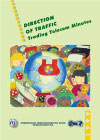
Summary
|
2. The International Telecommunications Environment in Transition
The international telecommunications environment has historically been based on a framework of bilateral relations: between countries and latterly between operators. This regime is enshrined in the International Telecommunication Regulations, an
international treaty which dates back to the early days of telegraph communications between sovereign states. What is now emerging is a multilateral regime, based on trade principles and captured in the WTO trade in services regime. As a result of this paradigm shift, traditional arrangements for carrying international calls and settling accounts are coming under increasing pressure.
On certain routes, particularly between developed and developing countries, imbalances between incoming and outgoing traffic have been accelerating since the early 1990s. This is partly due to the uneven pace of market reform, but it also represents the increasing ease with which the direction of a particular call can be reversed to arbitrage price differences, a service known as
call-back. The United States is the home of most call-back services and US residents are the most avid users of calling card and home country direct services. Virtually every single country of the world receives more traffic from the United States than it sends. In 1997, the United States sent out some 13.4 billion more minutes of traffic than it received and its trade deficit on international telecommunication services reached some US$ 5.7 billion.
But the United States is not alone in making net settlement payments to other countries. In total, some 38 countries, as diverse as the Switzerland and Swaziland, are obliged to make net compensation payments to their traffic partners. Added together, they have a net deficit of around US$ 12 billion in 1997 of which the United States makes up just under half. By contrast, the top ten net settlement surplus countries are all developing economies, headed by China and India, the world’s most populous countries (Table 1). |
What is now emerging is a multilateral regime, based on trade principles and captured in the WTO trade in services regime |



